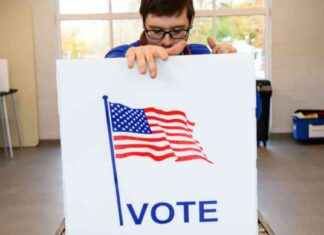California November Ballot Guide: Key Issues and Propositions to Know
As the November election approaches, Californians are gearing up to participate in a crucial moment in determining the future of their state and the nation. While the state’s Democratic leanings are well known, California is home to several swing districts that could have a significant impact on which party controls the U.S. House of Representatives. Additionally, voters will have the opportunity to elect a new U.S. senator, decide on several ballot measures, and weigh in on numerous local races. Here’s a comprehensive guide to what Californians need to know as they head to the polls.
**When is the Election?**
Election day in California is on November 5th, but in reality, it’s more like an election month. All 22.2 million registered voters in the state will receive mail-in ballots, scheduled to be sent out by October 7th. This extended voting period allows for greater flexibility and accessibility for voters to participate in the democratic process.
**What are Voters Deciding On?**
At the top of the ticket is the presidential race between Democratic Vice President Kamala Harris and Republican former President Trump. Californians will also be deciding on who will fill the Senate seat left vacant by the passing of Democrat Dianne Feinstein. Democratic Rep. Adam B. Schiff of Burbank and Republican former Dodgers star Steve Garvey are vying for this crucial position.
While California is known for its strong Democratic presence, the state could play a pivotal role in determining control of Congress. Ten House races in California are considered competitive by the nonpartisan Cook Political Report, with the most contested districts located in Orange, Los Angeles, Riverside counties, and the Central Valley. Both the Republican and Democratic parties, along with outside groups, are pouring millions of dollars into these races to sway voters.
In addition to the federal races, Californians will be weighing in on 10 statewide ballot measures. Proposition 36, which seeks to increase penalties for certain theft and drug crimes, is one of the most contentious issues on the ballot. Other measures include raising the state’s minimum wage to $18 per hour, approving two $10-billion bonds for school construction and climate change initiatives, and addressing various social and economic issues.
**Los Angeles County and L.A. City Races**
In Los Angeles County, residents will have the opportunity to choose from a variety of municipal, judicial, and school board candidates. One of the most closely watched races is the contest for Los Angeles County District Attorney between incumbent George Gascón and challenger Nathan Hochman, which serves as a referendum on criminal justice policy.
Voters will also be asked to decide on Measure H, which seeks to double the county’s quarter-cent homelessness sales tax to fund affordable housing and programs to reduce homelessness. Proposals to expand the county Board of Supervisors and elect the county executive officer are also on the ballot.
In the city of Los Angeles, voters will consider creating an independent redistricting commission for the City Council and the Los Angeles Unified School District Board of Education. Additionally, there are three City Council races, including one to replace longtime Council President Paul Krekorian.
**How to Check Voter Registration Status**
For those looking to confirm their voter registration status, Californians can easily check online using their driver’s license, state ID number, or the last four digits of their Social Security number. This ensures that voters are properly registered and able to participate in the upcoming election.
**Voter Registration Deadline**
The deadline to register to vote in California is October 21st. Online registration is available for those who wish to register conveniently from their own homes. Paper applications can be obtained at county election offices, libraries, DMVs, or post offices. Those who miss the deadline can still register as conditional voters, ensuring that everyone has a chance to make their voice heard.
**Accessing Voter Guides**
State and county voter guides will be mailed to every registered voter, providing essential information on candidates, propositions, and voting procedures. These guides are valuable resources for voters to educate themselves on the issues and make informed decisions at the polls.
**Voting Without a Permanent Address**
Unhoused individuals, those living off the grid, and others without a permanent address are eligible to vote as long as they meet certain criteria. They must be U.S. citizens, California residents over the age of 18, not serving time for a felony conviction, and not deemed mentally incompetent by a court.
These individuals can receive voting materials at shelters, P.O. boxes, or businesses, ensuring that everyone has the opportunity to participate in the electoral process.
**Final Thoughts**
As Californians prepare to cast their votes in the upcoming election, it’s important to be well-informed about the candidates, propositions, and issues at stake. By taking the time to research and understand the ballot, voters can make choices that reflect their values and priorities. With so much at stake in this election, every vote counts in shaping the future of California and the nation.



























